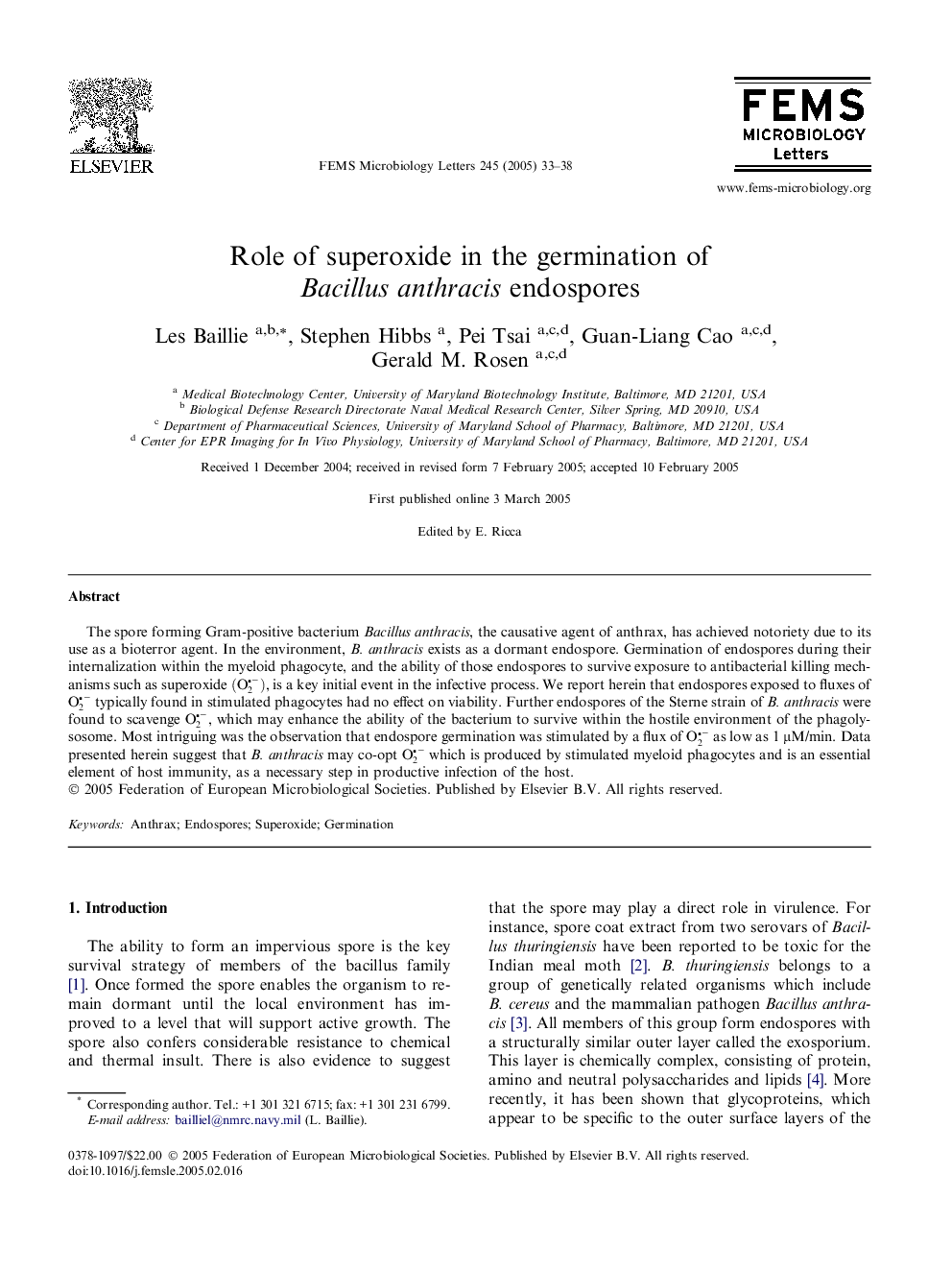| Article ID | Journal | Published Year | Pages | File Type |
|---|---|---|---|---|
| 9122013 | FEMS Microbiology Letters | 2005 | 6 Pages |
Abstract
The spore forming Gram-positive bacterium Bacillus anthracis, the causative agent of anthrax, has achieved notoriety due to its use as a bioterror agent. In the environment, B. anthracis exists as a dormant endospore. Germination of endospores during their internalization within the myeloid phagocyte, and the ability of those endospores to survive exposure to antibacterial killing mechanisms such as superoxide (O2-), is a key initial event in the infective process. We report herein that endospores exposed to fluxes of O2- typically found in stimulated phagocytes had no effect on viability. Further endospores of the Sterne strain of B. anthracis were found to scavenge O2-, which may enhance the ability of the bacterium to survive within the hostile environment of the phagolysosome. Most intriguing was the observation that endospore germination was stimulated by a flux of O2- as low as 1 μM/min. Data presented herein suggest that B. anthracis may co-opt O2- which is produced by stimulated myeloid phagocytes and is an essential element of host immunity, as a necessary step in productive infection of the host.
Related Topics
Life Sciences
Biochemistry, Genetics and Molecular Biology
Genetics
Authors
Les Baillie, Stephen Hibbs, Pei Tsai, Guan-Liang Cao, Gerald M. Rosen,
